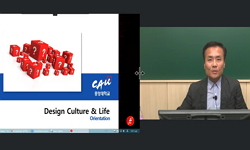지난 산업화시대와 디지털시대에서 동인은 사람이 아닌 기계와 디지털 기술이었다. 여기에서 비롯된 기계‧기술만능주의는 인간 소외라는 사회적 문제를 야기하고 있다. 이러한 시점에...
http://chineseinput.net/에서 pinyin(병음)방식으로 중국어를 변환할 수 있습니다.
변환된 중국어를 복사하여 사용하시면 됩니다.
- 中文 을 입력하시려면 zhongwen을 입력하시고 space를누르시면됩니다.
- 北京 을 입력하시려면 beijing을 입력하시고 space를 누르시면 됩니다.
부가정보
국문 초록 (Abstract)
지난 산업화시대와 디지털시대에서 동인은 사람이 아닌 기계와 디지털 기술이었다. 여기에서 비롯된 기계‧기술만능주의는 인간 소외라는 사회적 문제를 야기하고 있다. 이러한 시점에서 현재 대두되고 있는 것이 아날로그 감성으로 아날로그적인 것에서 오는 ‘정, 따뜻함, 추억의 향수, 휴머니즘’ 등의 정서로 이해할 수 있다. 다만 여기에서 쓰인 아날로그라는 표현은 디지털이 첨단화된 문명, 차갑고 날카로운 기계 등을 대변하는 의미로 널리 쓰이고 있는 것처럼 문자 그대로에 대한 의미의 해석보다는 디지털과 산업화 시대 이전의 것들, 인간 그 자체와 인간 손으로 만들어진 것들, 혹은 그런 느낌을 주는 것들이라고 의역하는 것이 옳다. 디지털 기술이 등장하면서 지식과 정보를 보급하는 기술의 주체는 인쇄술이 아니라 디지털 기술이 되었다. 인터넷과 다양한 디지털미디어의 등장은 종이에서 스크린으로 지식과 정보를 옮겨갔다. 그럼에도 불구하고 여전히 ‘종이 없는 사무실’이 실현되지 않고 있는 까닭은 종이의 독특한 상호작용 방식 때문이다. 인쇄물을 대체할 수 있는 것은 없다. 그러나 디지털 출판물이 인쇄물의 특정 영역을 나눠 가지고 있는 것은 분명하다.신문을 비롯한 일회성 인쇄물들은 컨텐츠를 강화하고, 상호작용 하고, 공유할 수 있는 디지털 기술로 살아남을 것이다. 컨텐츠를 개인적이고 보편적으로 공유하는 일에는 디지털기술이 더욱 효과적이기 때문이다. 반면 촉각적인 물성에 가치를 둔 인쇄물은 미래에 귀중한 컨텐츠를 물리적으로 보존하는 매체로서, 그리고 소장의 가치가 있는 예술적인 산물로서 존재하게 될 것이다. 문제는 인쇄물을 어떻게 보다 더 예술적으로 만들 수 있는지에 대한 고민이 필요하다는 것이다. 따라서 본 연구에서는 아날로그 감성 디자인으로 인간중심적인 경험을 제공하고 있는 인쇄물의 사례를 분석함으로써 이것들의 발전 방향에 대한 실마리를 제시했다. 결과물로 작품을 제작함으로써 인쇄물이 앞으로 나아가야 할 방향을 구상화했다.
다국어 초록 (Multilingual Abstract)
A driving agent in the industrial age and the digital age, also called the information age, was not a human being but a machine and digital technology. This brought about incredible machinery and technology, which in turn gave rise to the social probl...
A driving agent in the industrial age and the digital age, also called the information age, was not a human being but a machine and digital technology. This brought about incredible machinery and technology, which in turn gave rise to the social problem of human alienation. What is emerging at this time is analogue emotion such as affection, warmth, nostalgia of memories, and humanism, which stem from analogue matters. As the word 'digital' has the nuance of high-tech civilization, cold and sharp machines, and so on, the expression of 'analogue' does not mean its literal sense so much as its metaphorical interpretation of things that existed before the industrial and digital age, and are produced by human beings themselves. As digital technology emerges, the principal agent that disseminates knowledge and information is not printing art, but digital technology. The invention of the Internet and various digital media has moved knowledge and information from paper onto screens. Nevertheless, the office without paper has never existed, which is due to the unique way in which paper interacts. Nothing displaces printed matter, but apparently digital publications have taken a section from printed matter. Disposable printed matter like newspapers is sure to strengthen the contents, interact, and survive while using sharable digital technology. It is because digital technology is more effective for sharing contents privately and universally. On the other hand, printed matter which values the physical property is sure to survive as a medium and as an artistic product worth owning, and physically preserves valuable contents for future. The main focus here is how we can make printed matter more artistic. Further study is required to settle the issue. Accordingly, this study analyzed cases of printed matter which provided human oriented experiences using analogue emotional designs, and presented clues to finding ways to direct the development of printed matter. This study concretely showed the direction in which printed matter should proceed by making a work of its findings.
목차 (Table of Contents)
- 1. 서론 1
- 1.1. 연구 배경과 목적 1
- 1.2. 연구방법 및 범위 6
- 2. 아날로그 감성과 디자인 8
- 2.1. 아날로그 감성의 이해 8
- 1. 서론 1
- 1.1. 연구 배경과 목적 1
- 1.2. 연구방법 및 범위 6
- 2. 아날로그 감성과 디자인 8
- 2.1. 아날로그 감성의 이해 8
- 2.2. 아날로그 감성의 출현 배경 12
- 2.3. 디자인 패러다임의 변화와 아날로그 감성 디자인 19
- 3. 인쇄물의 이해 25
- 3.1. 인쇄물의 개념과 성격 변화 25
- 4. 인쇄물의 아날로그 감성 디자인 32
- 4.1. 인쇄물에서 아날로그 감성의 표현 32
- 4.2. 인쇄물의 아날로그 감성 디자인 사례 44
- 5. 작품 제작 66
- 5.1. 작품 제작 의도 66
- 5.2. 작품 설명 및 제작 방법 68
- 6. 결론 80
- 참고문헌 83
- 영문초록 86












